My smoky, umami chicken chow mein is the main event at my place when I crave Cantonese takeout but feel like having some fun in the kitchen. I keep the veggies crisp yet pliant, the noodles on the springy side – and I lock moisture into the juicy chicken with a 4-ingredient marinade.
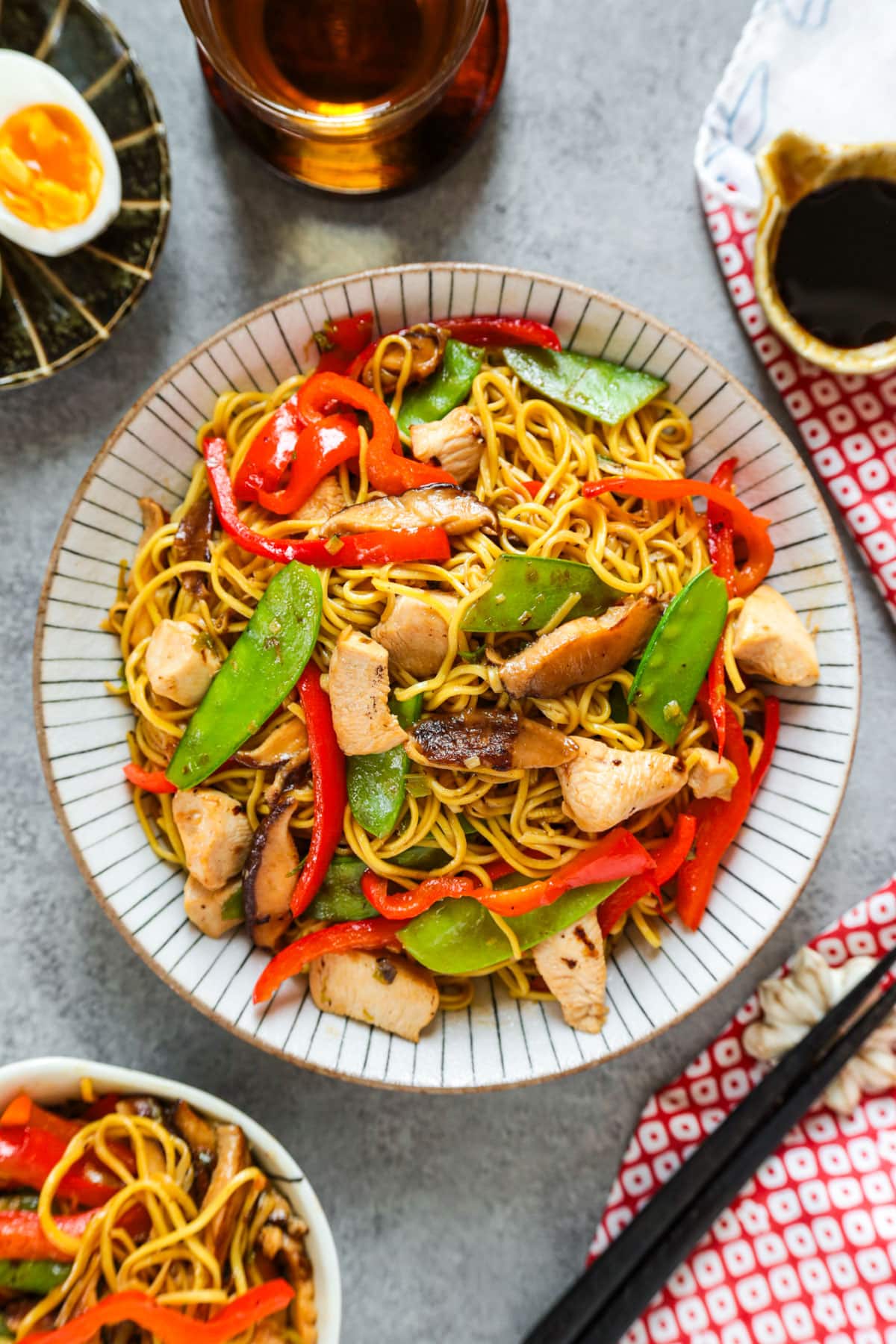
About This Recipe
If chicken chow mein was a person, we’d be pretty good friends. We’ve known each other for over 40 years now. I appreciate the smoky wok hei and the savory, chewiness of the egg noodles mixed with marinated chicken and colorful veggies. When it’s been a while, I consider picking up the phone to reconnect.
Chow mein hits that perfect spot in my palate that craves excitement, but familiar flavors. Even though I know what it’ll taste like, I’m always excited to dig in.
In fact, there has been a bit of a Chinese noodle renaissance at my house lately. I’ve been leaning on the shrimp lo mein, the spicy pan fried noodles and the crispy Cantonese chow mein rather hard lately. Chicken chow mein is the gateway recipe for my affinity for noodles.
Table of Contents
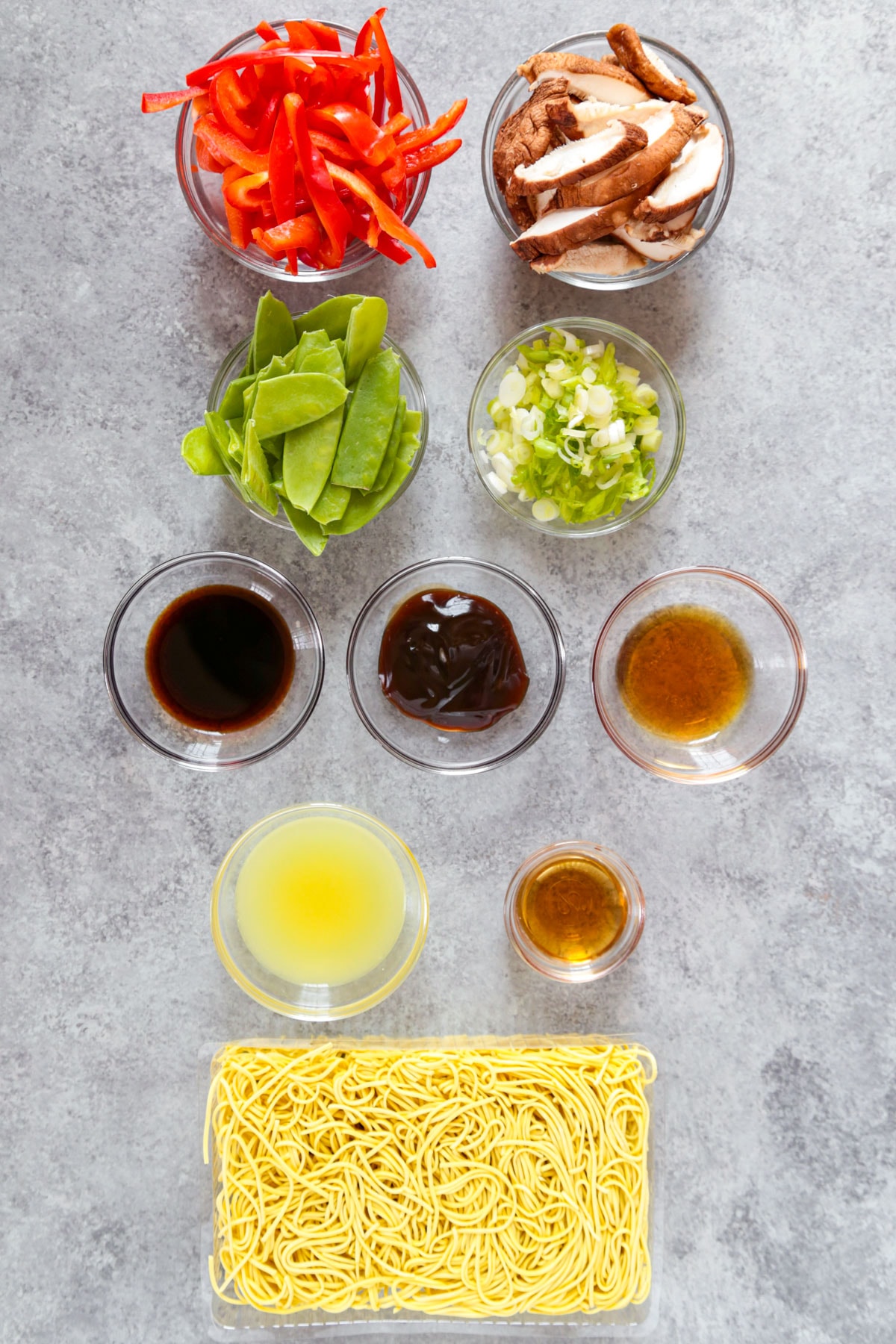
Ingredients Needed
Scroll to the bottom of this page for the full recipe steps and measurements.
- Chicken: I use boneless, skinless chicken breast, because it’s moist and tender and easy to find. Dark meat from boneless chicken thighs also works, especially if you like a gamey taste.
- Oil: Use a neutral oil with a high smoke point such as vegetable oil, canola oil, or grapeseed oil.
- Chow Mein Noodles: Chow mein noodles are egg noodles that are sold fresh or dried. They come sold in nests and can be found at your local Asian supermarket in the frozen section or dried noodles section. I always use dried noodles because I keep a few packages in my pantry at all times to use in last minute stir fries.
- Sliced Vegetables: Shiitake mushrooms, bell peppers and snow peas are all popular ingredients to use in Chinese stir fries, but feel free to use any vegetable combination you like.
Chicken Marinade
4 ingredients: soy sauce, shaoxing wine, cornstarch and toasted sesame oil.
Why it works: The cornstarch locks moisture into the chicken while tenderizing the meat at the same time. And it helps the marinade penetrate with maximum flavor in a short time.
Chow Mein Sauce
5 ingredients: oyster sauce, soy sauce, shaoxing, chicken broth, sesame oil.
Why it works: The sharpness from the shaoxing wine cuts through the salty, briny, sweet flavors from the oyster sauce. And the sesame oil adds nutty, toasty undertones.
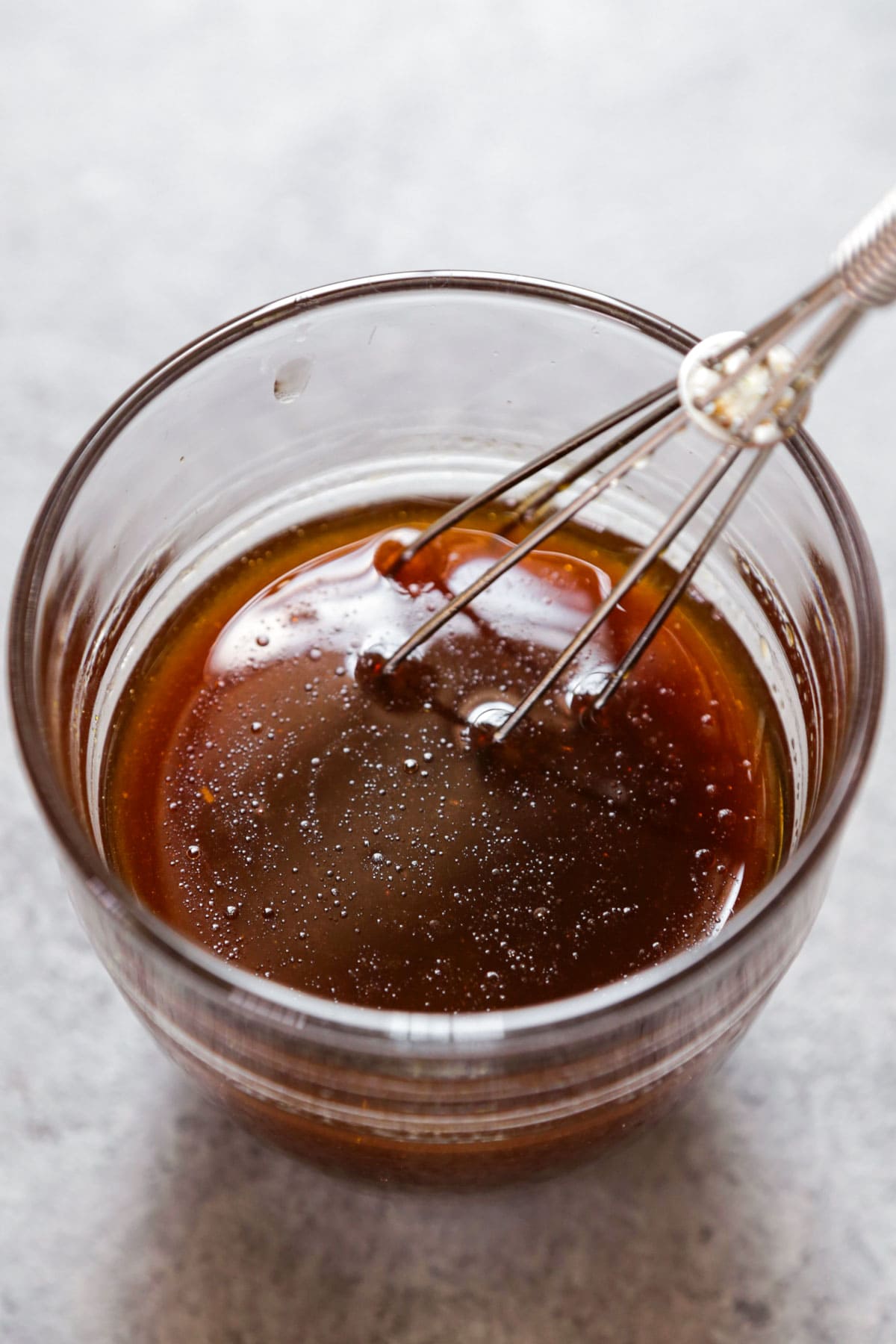
How To Make Chow Mein
- Marinate the chicken. Mix the marinade and add the sliced chicken. Make sure all the pieces are coated evenly. Marinate in the fridge for at least 30 minutes.
- Mix the chow mein sauce in a bowl and set aside.
- Boil the noodles according to the package instructions. Drain and set aside.
- Cook the chicken in a pan over high heat. When cooked through, transfer to a plate.
- Cook the vegetables in the same pan until tender/crisp.
- Put it all together. Once the veggies are cooked, re-add the chicken, chow mein noodles and sauce. Toss until evenly mixed. Serve immediately.
Caroline’s Cooking Tips
Cook the chicken first, but don’t wash the pan. The marinated chicken leaves a ton of flavor in the wok. I take it out as soon as it’s cooked so it stays juicy. But I get some real flavor mileage from the drippings when I use it to cook the vegetables in a second wave. As soon as the cooked chicken is on a plate, I put the pan back on the stovetop and start on the veggies.
Stir fry using high heat. A screaming hot pan allows me to cook things very quickly while using very little oil. Veggies retain their tender crunch, noodles keep their spring loaded bite – and the chicken doesn’t have enough time to dry out. Believe it or not, depending on the recipe, low heat can be the culprit for overcooked food. Since low heat takes so long to cook things, colorful ingredients can end up essentially steaming their vibrance away. Low heat is perfect for things like pinto bean stew. High heat is ideal for stir fries. In fact, for this recipe I don’t even add oil to the pan until it’s hot.
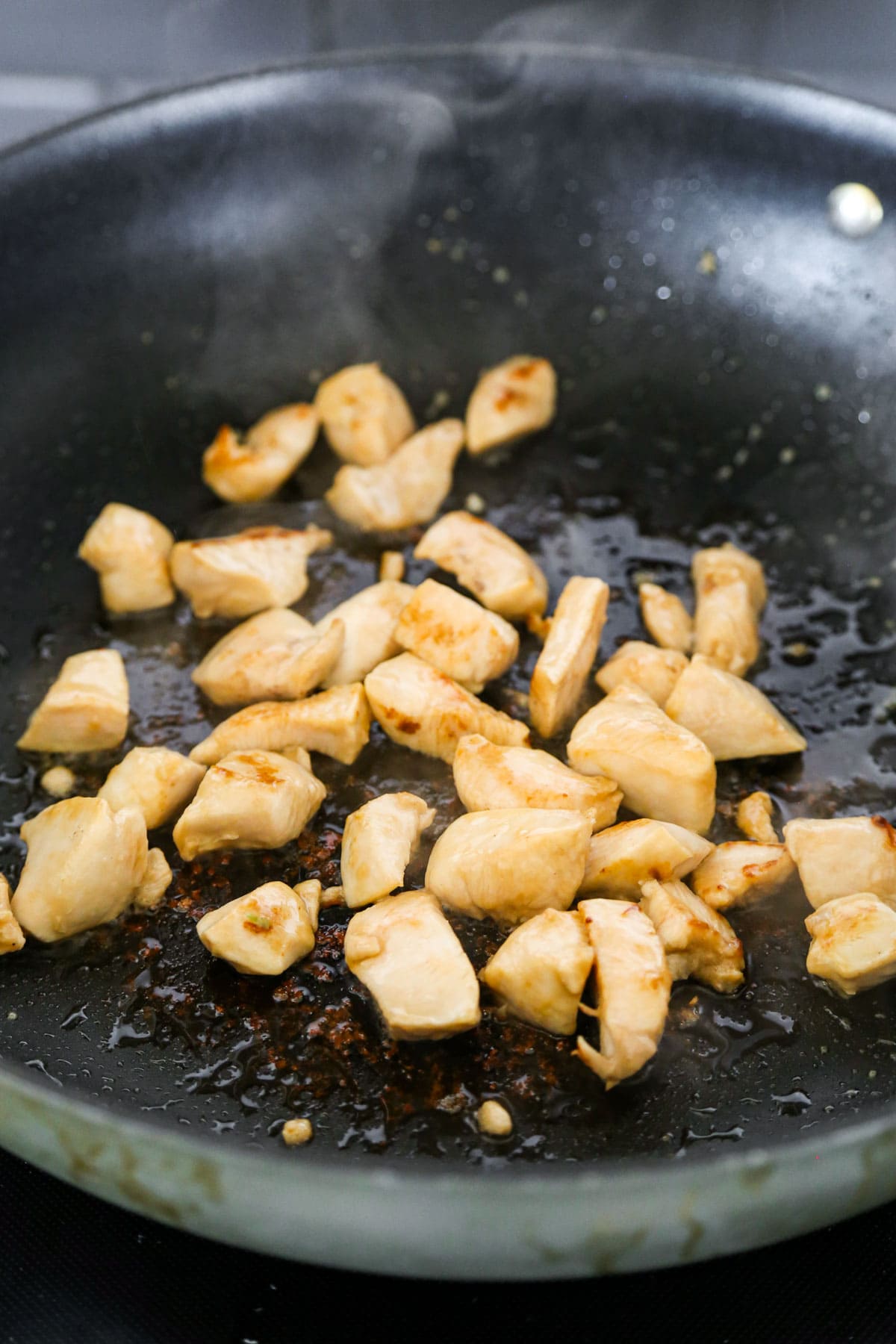
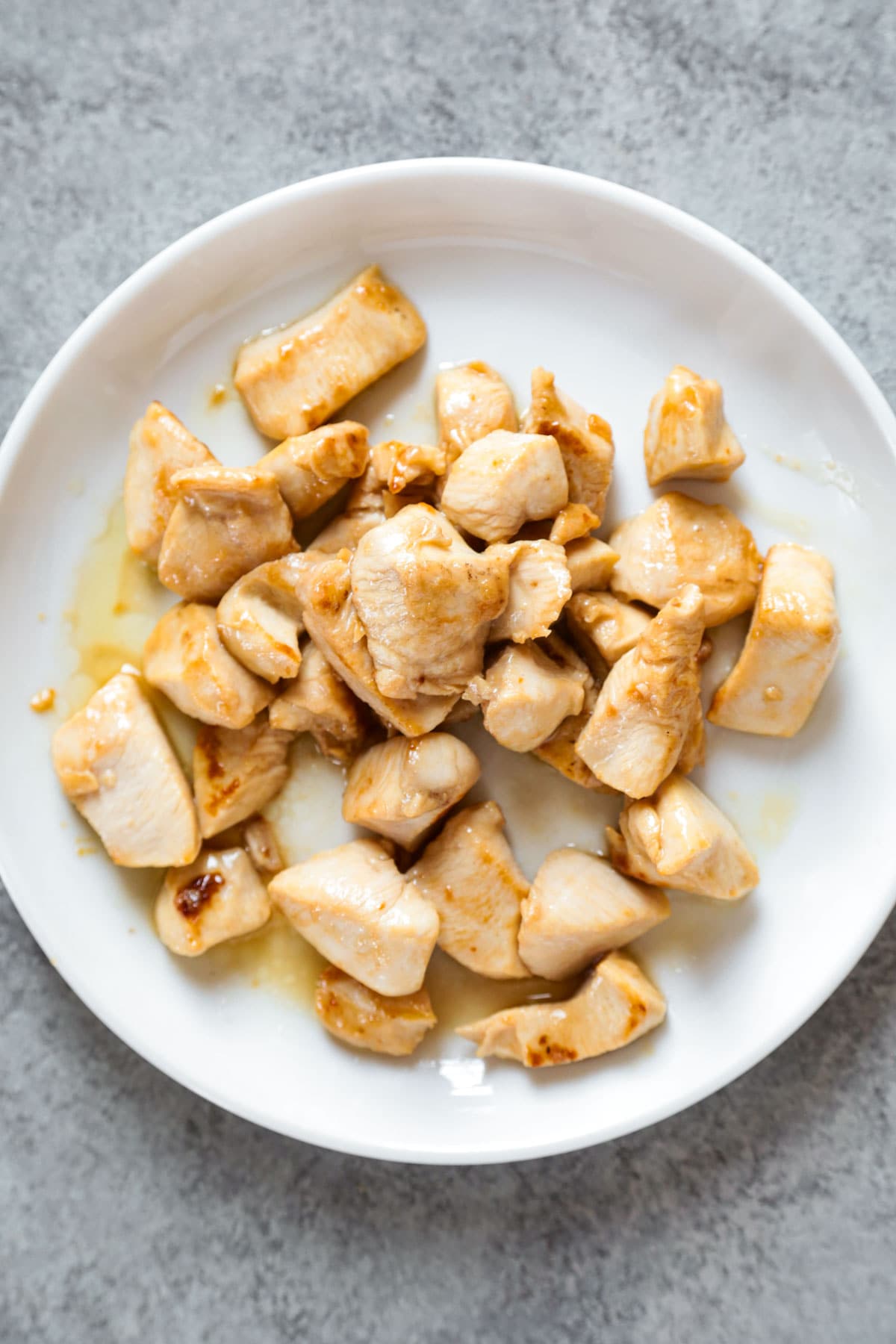
Recipe Variations
Try a different protein. Beef, squid or roast pork are all contenders. And no takeout menu is complete without shrimp chow mein.
Make it vegetarian. Just sub the chicken out for sliced tofu or, better yet, crispy tofu. Rehydrated soy curls would work too. Use veggie broth instead of chicken stock. And pull the oyster sauce in favor of mushroom based oyster sauce.
Use different vegetables. Whatever is handy in the crisper. Sliced carrots, green pepper, broccoli, etc. Or grab a can of bamboo shoots and water chestnuts and use those.
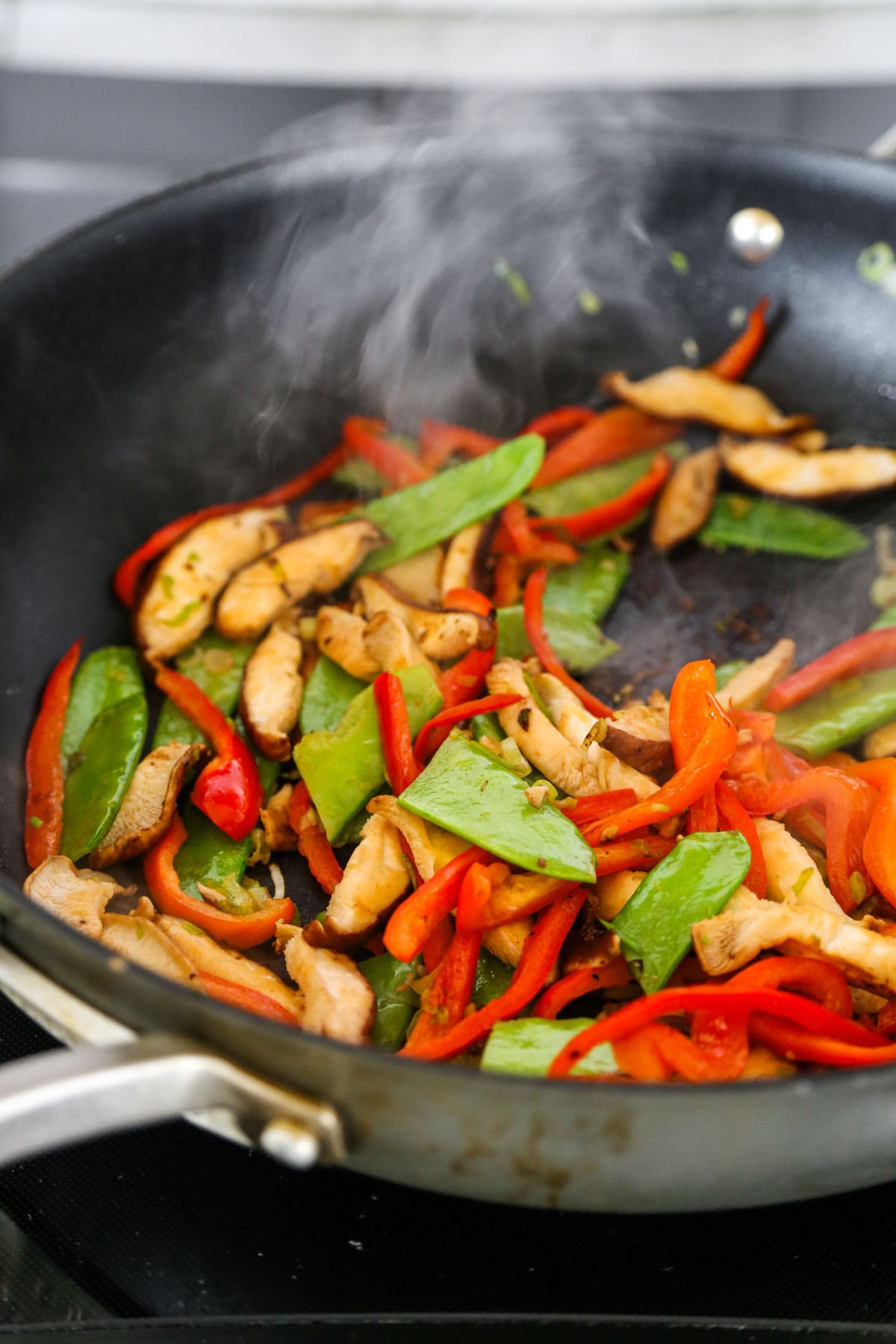
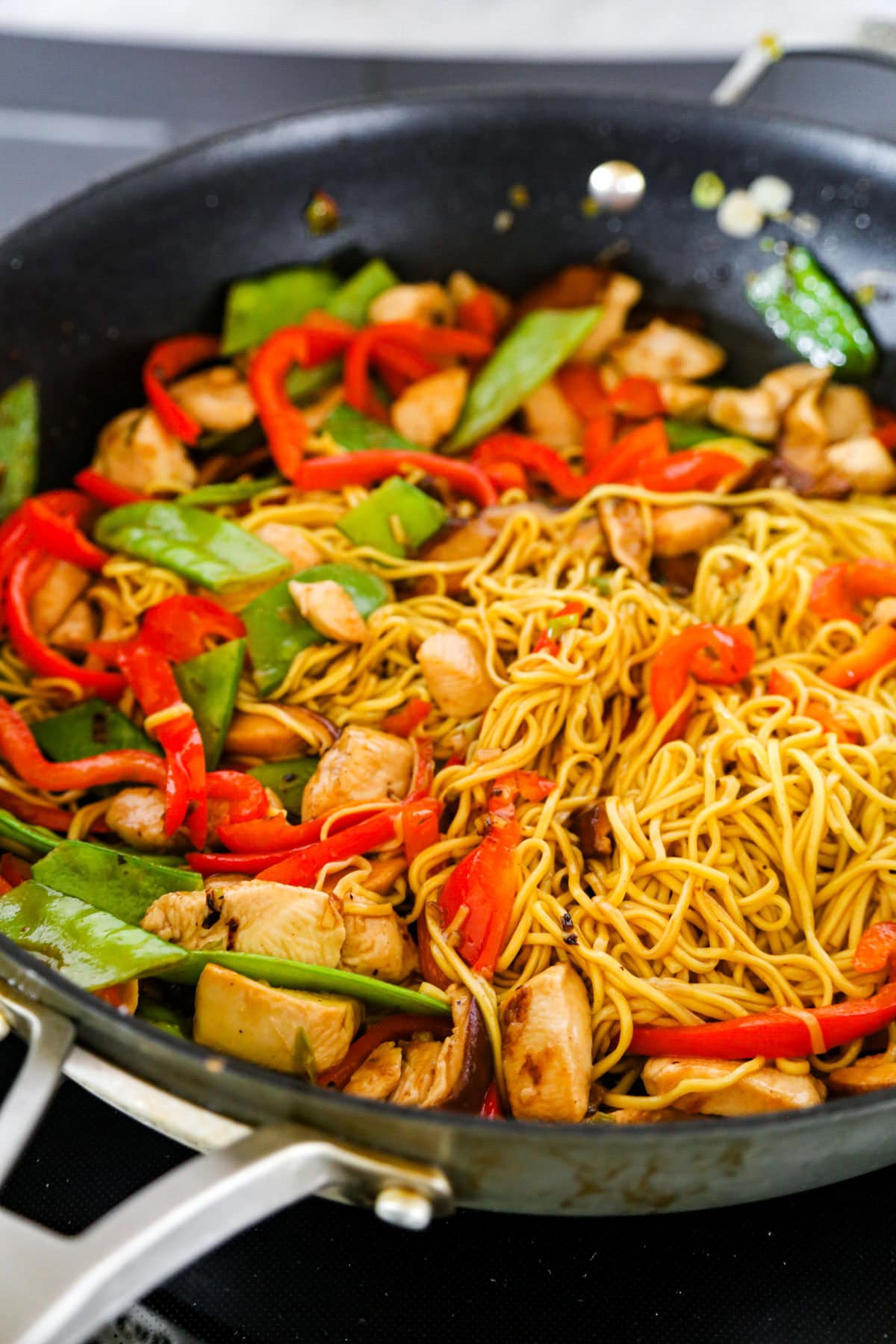
Storage and Reheating
Fridge: Store leftovers in the refrigerator (covered) for up to 3 days. Chinese noodles keep rather well in the fridge – and leftovers are delicious hot or cold.
Freezer: Allow the chow mein to cool to room temperature, then place in freezer bags or single serving food storage containers for up to 3 months. Thaw overnight in the refrigerator, or gently in the microwave. Then microwave until piping hot before serving.
Reheating: Reheat in the microwave or in a hot pan with a little oil on the stovetop. Revitalize the flavors with a dash of soy sauce.
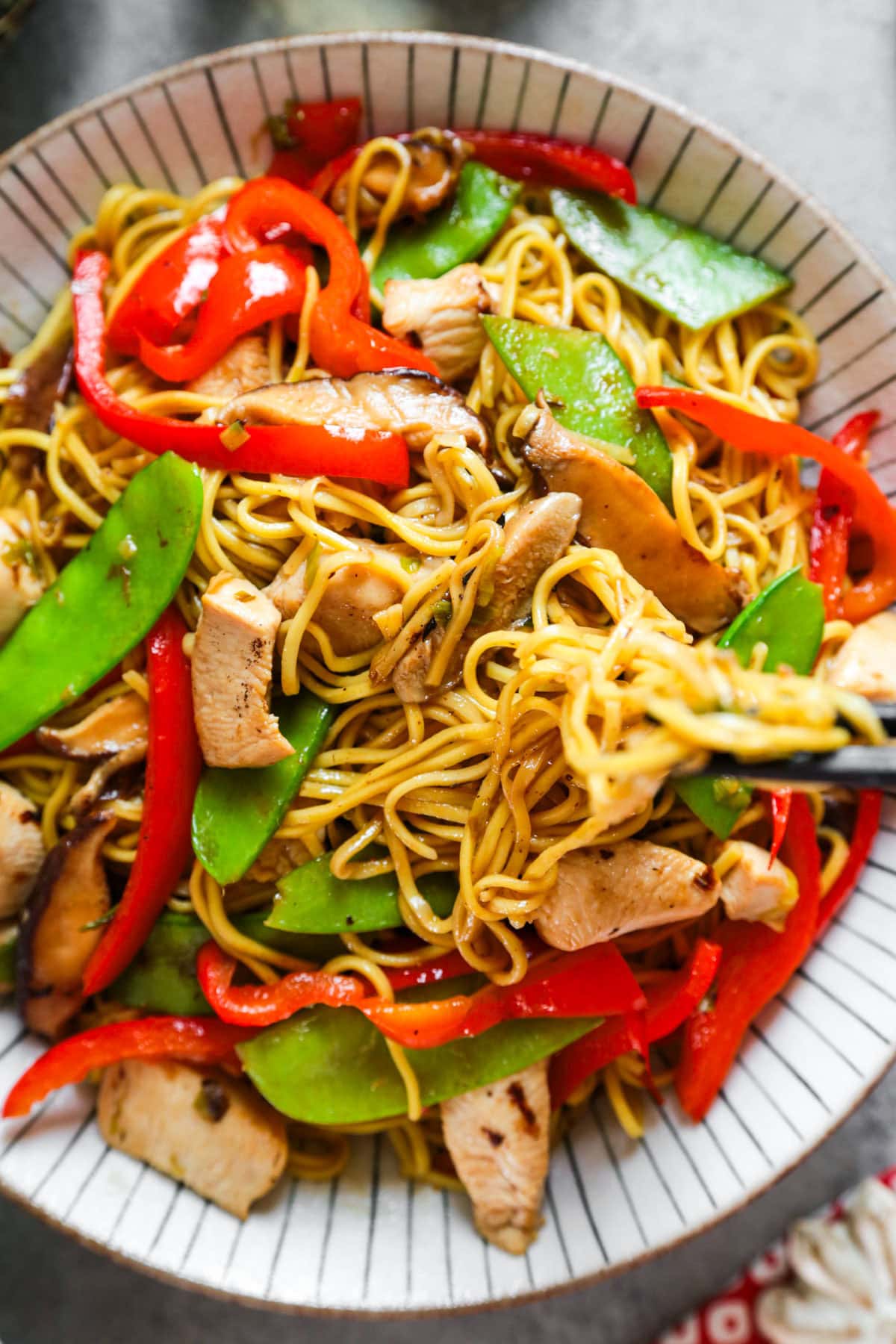
What I Serve With Chicken Chow Mein
Chicken chow mein is a filling dish that I like to serve as a main. It pairs well with other Chinese main dishes or sides such as:
- Chinese Eggplant With Garlic Sauce
- Moo Goo Gai Pan
- Classic Egg Fried Rice
- Garlic Shrimp With Chili Crisp
- Stir Fried Bok Choy
Other popular noodle dishes you might like to try: Miso ramen, spicy vegan sichuan noodles, fried noodles with soy sauce, Korean japchae noodles, yaki udon, easy yakisoba, stir fried glass noodles with shrimp.
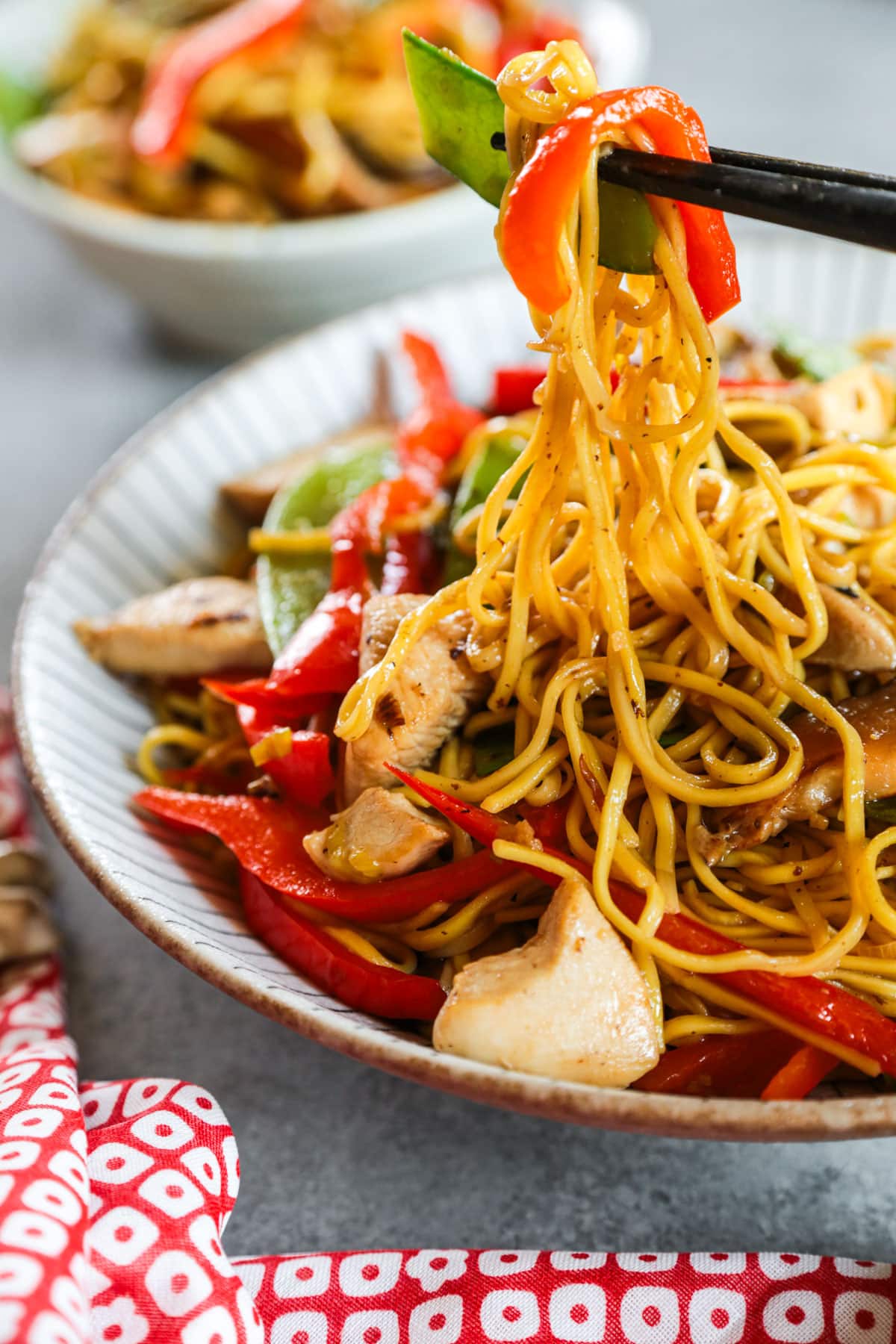
Frequently Asked Questions
Nope. Not unless you work at a restaurant with an industrial 100,000 BTU gas burner. Those guys definitely get some real benefits out of the rounded bottom and sloped edges of a wok. For the rest of us, any deep frying pan or skillet works.
This recipe has 2 failsafes against dry, rubbery chicken. First, the cornstarch in the marinade should lock in moisture and flavor while tenderizing the chicken. Second, for this recipe I always cook the chicken first and remove it from the pan as soon as it’s cooked through. I reincorporate it with the noodles, veggies and sauce at the very end – just before serving.
Unfortunately, chow mein noodles are egg noodles. So it’ll never be 100% vegan. Try making tofu chow fun with watercress or fiery vegan dan dan noodles instead.
A good substitute for shaoxing wine is dry sherry.
Did you like this recipe? Are there changes you made that you would like to share? Share your tips and recommendations in the comments section below!
Print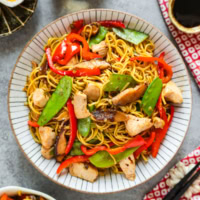
Chicken Chow Mein
- Prep Time: 15 minutes
- Cook Time: 15 minutes
- Total Time: 30 minutes
- Yield: 2 large servings 1x
- Category: Noodles
- Method: Stir fry
- Cuisine: Chinese
Description
The secret to juicy flavorful chicken is a simple marinade that locks in flavor and moisture. Make this restaurant quality chicken chow mein in just 30 minutes from start to finish.
Ingredients
- 1/2 pound boneless, skinless, chicken breasts, sliced into bite size strips
- 2 tablespoons neutral oil such as vegetable oil or peanut oil
- 6 ounces chow mein noodles
- 1 cup snap peas
- 1 green or red bell pepper, thinly sliced into strips
- 3 green onions, thinly sliced on the bias (diagonally)
- 1 cup sliced fresh shiitake mushroom or button mushrooms
Chicken marinade
- 1 teaspoon regular soy sauce
- 1 teaspoon shaoxing wine or dry sherry
- 1 teaspoon cornstarch
- 1 teaspoon sesame oil
Chow mein sauce
- 2 tablespoons oyster sauce
- 1 tablespoon regular soy sauce
- 2 teaspoons shaoxing wine or dry sherry
- 3 tablespoons chicken broth
- 2 teaspoons toasted sesame oil
Instructions
- Marinate the chicken: Whisk the ingredients for the chicken marinade in a bowl and add the chicken strips. Massage with the marinade to coat the pieces evenly and set aside. Marinate for 30 minutes (or up to 3 hours for more flavor).
- Make the chow mein sauce: Whisk the ingredients for the chow mein sauce in a bowl and set aside.
- Boil the noodles: Fill a medium or large pot with water and bring it to a boil. Add the chow mein noodles and cook according to the directions on the package (about 3 minutes). Drain the noodles and set them aside.
- Cook the chicken: Use a wok or deep nonstick skillet over high heat. When the wok is hot, add 1 tablespoon of neutral oil. Swirl the oil to coat the surface of the wok and add the chicken. Stir fry for 3 to 4 minutes, until the chicken is cooked through. Turn the heat off and transfer the chicken to a plate.
- Cook the vegetables: Use the same wok over high heat and add 1 tablespoon of neutral oil. Add the snap peas, bell pepper, green onion, and mushrooms, and stir fry for 3 to 4 minutes, until the vegetables are cooked but still yielding a slight crunch.
- Put it all together: Return the chicken to the wok and add the noodles. Add the sauce and toss again to coat the chicken, noodles, and vegetables evenly.
- Serve: Turn the heat off and transfer the chow mein to a plate. Serve immediately.
Notes
Store leftovers covered in the fridge for up to 3 days.
Nutrition
- Serving Size: 1 serving
- Calories: 704
- Sugar: 9.8g
- Sodium: 1692mg
- Fat: 34.1g
- Saturated Fat: 14.2g
- Unsaturated Fat: 0.5g
- Trans Fat: 0.5g
- Carbohydrates: 63.6g
- Fiber: 6.6g
- Protein: 35.4g
- Cholesterol: 83.2mg
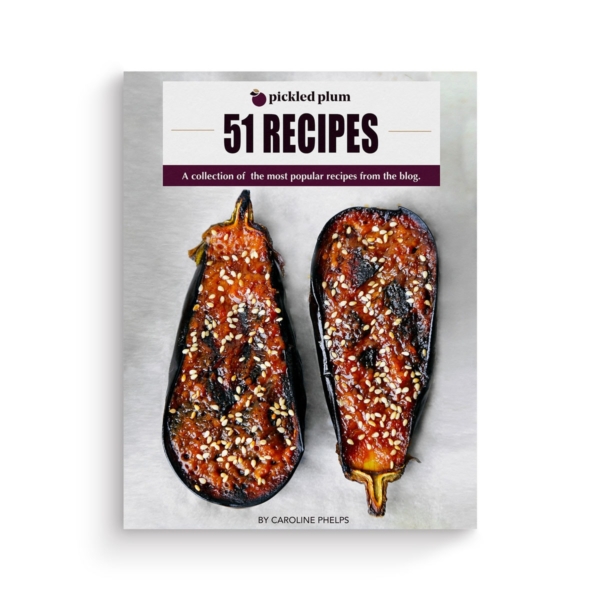
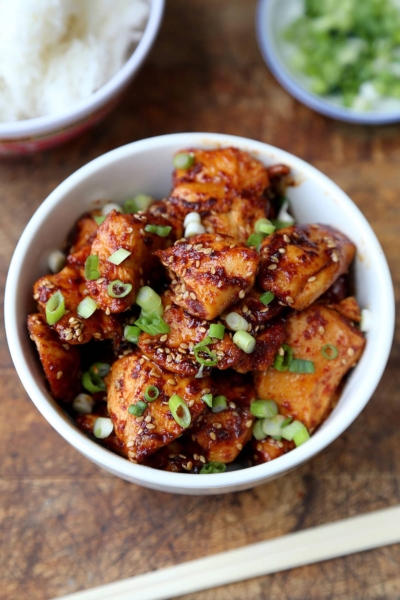
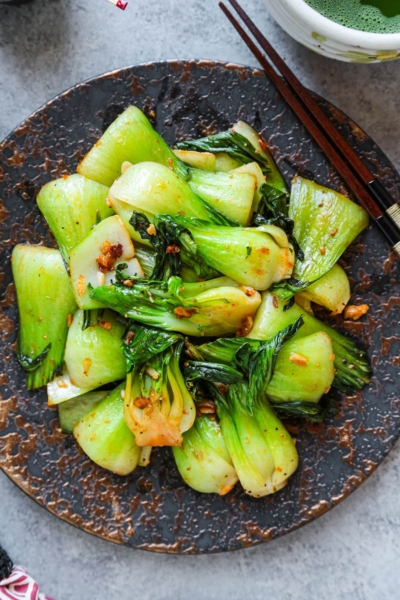
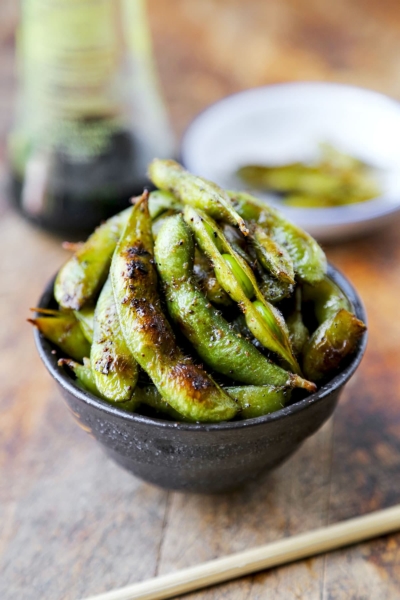
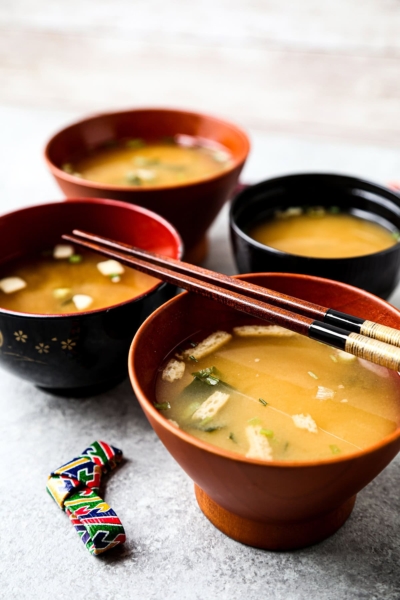
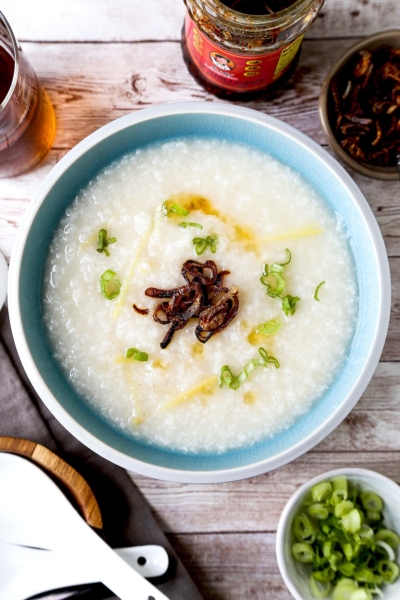









Yummy Yummy Made this exactly as written except I’m in Montana and could only find yakisoba noodles. Just received my shaoxing wine yesterday and so excited I found this recipe. Everything I’ve made from your site has turned out perfectly. Thanks much
Thank you so much Anne!